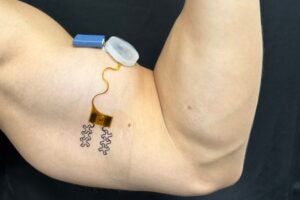“A large number of physiological and behavioral measures reveal differences between heterosexuals and homosexuals,” said McFadden. “The problem for science is to identify the mechanisms–presumably they are hormonal mechanisms–that produce these differences. Our findings suggest that the auditory system may be a valuable, if unlikely, tool for studying those causal mechanisms. Apparently whatever developmental mechanisms are acting to produce homosexuality are also affecting components of the auditory system.”
“Logic suggests that the degree of exposure to androgens–the male sex hormones–is somehow involved in the production of homosexuality, and our auditory results are generally in accord with that idea,” McFadden said.
Champlin emphasized that “the differences we have observed were group differences, and it is not possible to determine anyone’s sexual orientation from knowledge of his or her auditory brain
waves.”
For both males and females, five separate measures of the auditory brain waves were different in the homosexuals and heterosexuals. All of the waves showing differences appeared within 0.05 seconds following the acoustic stimulus. The auditory brain waves studied by McFadden and Champlin are recorded using electrodes attached to the scalp. They are commonly measured when it is necessary to obtain a physiological assessment of hearing instead of a behavioral one, as with infants.
This article can be viewed online at:
http://link.springer-ny.com/link/service/journals/10162/index.htm
http://link.springer-ny.com/link/service/journals/10162/contents/00/10008
for user id please type: online1st
for the password, please type PoX1615
Champlin and McFadden can be reached through e-mail: mcfadden@psy.utexas.edu and champlin@mail.utexas.edu



